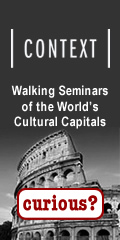Madrid: Sometimes Free
Sights in Madrid that are sometimes free of charge
Madrid for Free
Always free
Sometimes free
Churches
Markets
Parks
Experiences
Discounts
Any day on which entrance to a normally pricey sight is free is never a secret. Expect a crush of visitors, especially of schools on class trips and other cash-strapped groups. Sure you get in for free, but the crowds may not make it worth your while. At the very least, try to show up when the doors open so you can be at the head of the surging masses. Caveat emptor.
Note that, officially, these days of free admission are for EU citizens only, but the ticket booths rarely seem to enforce this policy and just let everyone glide in for free.
FREE DAILY AFTER 6PM
Museo del Prado
One of the world's greatest painting galleries, easily up there with the
Louvre, Uffizi, London's National Gallery, Vatican, or Metropolitan—just
not as well known (largely due to Spain's largely falling off the tourism
radar during the decades of Franco's rule)... ![]()
FREE ON WEDNESDAY
Palacio Real
Built in 1764 on the site of the immolated Alcazar, Madrid's 3,000-room
Royal Palace contains the usual hyper-luxurious kingly appointments and
furnishings, frescoes by Tiepolo, a pretty wicked Arms and Armour collection
(Charles V's marauding troops kitted out in these gigs), and a genuinely
interesting historic pharmacy. And hey, if you're here at noon on the
first Wednesday to the month you get to the see the changing of the guard
in the long, colonnaded courtyard.
www.patrimonionacional.es
Monasterio de las Descalzas Reales
Felipe II's sister Juana de Austria (already widowed of Prince Don Juan of Portugal by the time she was but 19 years old) was in some ways as pious as her brother, and she founded this nunnery for the Poor Clares in the 1500s.
However, this was no harsh convent for the brides of Christ, but rather a sort of religious retreat for the daughters of nobility where they could spend time safely squirreled away from the wiles of men until their fathers could seal the deal on whom they would marry.
At least at
this "Monastery of the Barefoot Royals" they had a surfeit of tapestries,
frescoes, and a nice variety of art to admire while they awaited their
nuptial fates, including canvases by Titian, Breughel the Elder, and Rubens.
You, too, can admire them on the requisite guided tours, provided you
do so quickly (the guides insist upon taking everyone through at a dead
trot).
www.patrimonionacional.es
Museo Lazaro Galdiano
The early 20th century mansion of this author and financial guru is now open to the public, so we can all admire his taste in medieval silversmithy and carved ivories, and paintings by Goya, Ribera, El Greco, Zurbarán, Tiepolo, Constable, Gainsborough, Murillo, and even one bona fide Leonardo da Vinci.
Panteon de Goya (Goya's Tomb)
Francesco de Goya decorated this chapel in 1797 with scenes from the Life of St. Anthony (populated, of course, by members of the contemporary Spanish court). The great, rather disturbed 18th century Spanish genius was later buried here (or at least his body was, Bordeaux, where he died, has managed to hold on to his head).
Museo Municipal
In a former poorhouse with an elaborate Churrigueresque (rococo) facade, this museum traces the history of the city of Madrid (conveniently, it's got some Roman mosaics in the basement). Frankly, it's probably most interesting to true history buffs, though the scale models of the city at different eras do help one understand how Madrid developed into the overly-sprawling urban center it has now become.
FREE ON SATURDAY AFTER 2:30PM
Centro de Arte Reina Sofia
Madrid's modern art museum has the usual mix of sometimes intriguing,
sometimes whimsical, often ridiculous and pointlessly self-important art
from the last half of the 20th century, as well as a cache of mediocre
works by Dalí, Mir?, and Juan Gris, but it draws the crowds for
Picasso's masterpiece Guernica, a vast and disturbing artistic
condemnation of the terrible 1937 massacre when Generalissimo Franco invited
his buddy Hitler to test his luftwaffe bombers by leveling this Basque
town during Spain's bloody Civil War. Anyone accustomed to scoffing at
Picasso's style as child-like will come away with a whole new respect
for just how powerful his style could be. The Guernica room is
also full of some of the many studies and sketches Picasso did for the
work, offering a unique insight into his artistic process.
museoreinasofia.mcu.es
Museo Archeológico Nacional
Madrid's underrated archaeological museum includes artifacts from prehistory
through the Middle Ages, largely Iberian but with some Greek and Egyptian
stuff thrown in for good measure. There's also a slightly cheesy mock-up
of the Caves of Altamira and their 15,000-year-old paintings.
www.man.es
FREE ON SUNDAY
Museo del Prado
(See above).
Museo de America
Lest we forget that the Spanish were the first conquistadores of North, Central, and South America, these rich ethnographic collections of pre-Columbian (and Filipino) artifacts remind us of how wonderful, advanced, and aesthetically diverse were those cultures that the great European explorers of the 16th and 17th centuries systematically plundered, looted, and robbed. To the museum's credit it goes to great pains to try and reveal and recreate a true sense the cultures, lifestyles, and vanished societies that produced these objects.
Museo de Artes Decorativas
A vast survey of Spanish tastes in interior décor and objets d'art from
the 15th through the 19th centuries (though five whole floors of ornate
candlesticks and fancy furnishings can get to be a bit much).
Museo Sorolla
He wasn't the greatest of Spanish painters, but Valencian Joaquin Sorolla (1863-1923) produced some fine canvases, many preserved here (alongside his prodigious ceramics collection) in the house-cum-studio he live din during his final 11 years.
Museo Romantico
Not as romantic as it sounds, but rather Romantic (with a captial "R," meaning the artistic movement), a hodgepodge of antique
furnishings, tchochkies, and Goyas cobbled together according to the aesthetics
of the late 19th century.
Museo Municipal
(See above).
Related Articles |
Outside Resources |
This article was last updated in January 2007. All information was accurate at the time.
Copyright © 1998–2010 by Reid Bramblett. Author: Reid Bramblett.



 ShareThis
ShareThis

